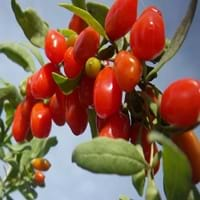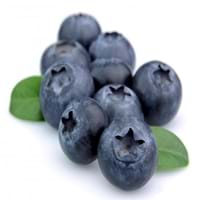Health Benefits
Anti-oxidant properties, Eye care, Helps in cartilage regeneration, Regulates Blood Sugar, Treatment of osteoarthritis
Cancer prevention, Heart care, Increases metabolic rate, Strengthening of bones, Treatment of skin Diseases
General Benefits
Boosts immune system, Digestive aid
Anti oxidant properties, Boosts immune system, Digestive aid, Eye care, Improves blood circulation, Sore throat treatment
Skin Benefits
Anti-aging benefits, Reduces wrinkles, Treatment of skin diseases
Anti-aging benefits, Reduces wrinkles, Skin rejuvenation, Treatment of skin diseases
Hair Benefits
Protects hair, Regulates hair growth
Protects hair
Allergy Symptoms
Anaphylaxis, Itching, Sneezing, Wheezing
Abdominal pains, Coughing, Diarrhea, Itching, Runny nose, Sneezing, Swelling of mouth, tongue or lips, Wheezing
Side Effects
May interact with some drugs
Allergic reaction
Best Time to Eat
Any time except an hour after meal, Don't consume at night and before bed
Best if taken as a breakfast (or empty stomach), As a snack in the late afternoon, Don't consume at night and before bed, Eat the fresh ones, avoid mixing with any other foods, don't eat after meal., Morning time (before lunch)
Vitamin A (Retinol)
Not Available
Vitamin B5 (Pantothenic Acid)
Not Available
Vitamin B6 (Pyridoxin)
Not Available
Vitamin B9 (Folic acid)
Not Available
Vitamin C (Ascorbic Acid)
Vitamin E (Tocopherole)
Not Available
Vitamin K (Phyllochinone)
Not Available
Lutein+Zeaxanthin
Not Available
Phytosterol
Not Available
Calories in Fresh Fruit with Peel
Calories in Fresh Fruit without Peel
Not Available
Not Available
Calories in Frozen Form
Not Available
Calories in Dried Form
Not Available
Calories in Canned Form
Not Available
Not Available
Varieties
No Types
Dwarf Huckleberry, Cascade Huckleberry, Mountain huckleberry and Blackwinter Huckleberry
Color
Scarlet red
Blue, Purple, Purplish black
Inside Color
Orange
Purple
Taste
Slightly bitter, Tart
Sweet
Origin
Unknown
North America
Grows on
Trees
Not Available
Soil Type
Well-drained
Loamy, Sandy, Well-drained
Climatic Conditions
Cold, Hot
Humid, Warm
Facts about
- Study says a man named Li Qing Yuen used to eat goji berries daily and lived for 252 years.
- They are also known as wolfberries in India & China.
- This fruit is used for spiritual purposes at many places.
- "I'm your huckleberry" is a way of saying that one is just the right person for a given job.
- The phrase "a huckleberry over my persimmon" was used to mean "a bit beyond my abilities".
Top Producer
China
United States of America
Other Countries
Canada, France, India, United States of America
Canada
Top Importer
United States of America
Canada
Botanical Name
Lycium barbarum
Gaylussacia brachycera
Synonym
Wolfberry
Not Available
Subkingdom
Tracheobionta
Tracheobionta
Division
Unknown
Magnoliophyta
Class
Unknown
Magnoliopsida
Subclass
Asteridae
Asteridae
Family
Solanaceae
Ericaceae
Species
L. barbarum
G. brachycera
Generic Group
Not Available
Heath
Difference Between Gojiberry and Huckleberry
We might think that Gojiberry and Huckleberry are similar with respect to nutritional value and health benefits. But the nutrient content of both fruits is different. Gojiberry and Huckleberry Facts such as their taste, shape, color, and size are also distinct. The difference between Gojiberry and Huckleberry is explained here.
The amount of calories in 100 gm of fresh Gojiberry and Huckleberry with peel is 32.00 kcal and 37.00 kcal and the amount of calories without peel is Not Available and Not Available respectively. Thus, Gojiberry and Huckleberry belong to and category.These fruits might or might not differ with respect to their scientific classification. The order of Gojiberry and Huckleberry is Solanales and Ericales respectively. Gojiberry belongs to Solanaceae family and Huckleberry belongs to Ericaceae family. Gojiberry belongs to Lycium genus of L. barbarum species and Huckleberry belongs to Gaylussacia genus of G. brachycera species. Beings plants, both fruits belong to Plantae Kingdom.









